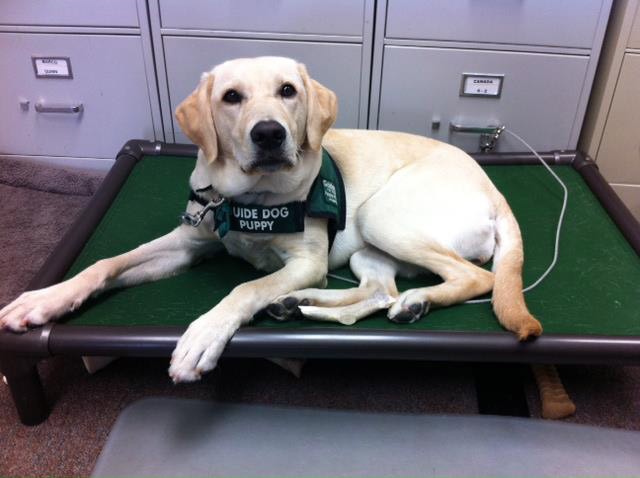Service Dogs vs. Therapy Dogs: What’s the Difference?
Posted by Jenn on 09/19/2016
Terms like service dog, support dog, and therapy dog are often used interchangeably, but they are not the same thing. The legal distinctions can get complicated, but here are some easy rules of thumb to remember regarding service dogs.

Training
Service dogs go through rigorous training before being matched with an individual with a disability. These dogs are trained to perform certain relevant tasks, such as retrieve items or pull wheelchairs. Some dogs are even trained to detect an impending seizure! Service dogs can also perform tasks for people with psychiatric disabilities. For example, these dogs may brace or guide someone who is dizzy from medication or disoriented from a PTSD episode. (A dog who provides reassurance and companionship to a person with a mental health condition, but does not perform any specific tasks, would be considered an emotional support dog rather than a service dog.)
Like emotional support dogs, therapy dogs are not taught to do any specific disability-related tasks. Their job is to be friendly and gentle with all kinds of people. They typically live with an owner/ handler, but their assistance is meant for others.
Focus
Service dogs are trained to focus on one person: their disabled partner. It is considered rude and even potentially dangerous for a stranger to pet a working service dog, since someone is relying on that dog’s attention to keep them safe.
Therapy dogs, on the other hand, are trained to be touched. Their handlers bring them to places where they can comfort large numbers of people, such as hospitals, nursing homes, schools, and areas hit by natural disasters.
Public Accommodations
In accordance with the Americans With Disabilities Act (ADA), service dogs must be allowed anywhere the general public can go, including stores, churches, and buses. Kicking a service dog out of a restaurant is not only a terrible way to treat a customer – it will also likely result in a lawsuit!
Therapy dogs and emotional support dogs, on the other hand, are not protected by federal law and, in the absence of some other state or local law, can be barred from public areas just like regular pets.
Breed
The vast majority of service dogs are Labrador retrievers, Golden retrievers, or German Shepherds. These dogs are bred to have the ideal combination of temperament, intelligence, and size for service work.
Therapy dogs and emotional support dogs come in all shapes and sizes. A sweet, easygoing temperament is really the only requirement. The amazing story of Smiley, a therapy dog who was born without eyes, went viral last year.
While we’d like to believe that no one would ever try to pass off their pet as a service dog, it does happen, and business owners have lots of legitimate reasons for keeping out unruly pet dogs. So how can you prove your service dog is the real deal? The good news is that you don’t have to. Businesses are legally allowed to ask if your dog is a service dog, and if so, what tasks the dog has been trained to perform. They cannot ask about the nature of your disability, or require any special paperwork. (The U.S. does not have a universal process for qualifying or registering service dogs, anyway.) And don’t forget that your dog is a living, breathing testament to her service-dog status. For most people, she’ll be the most well-behaved and dignified dog they have ever encountered!
